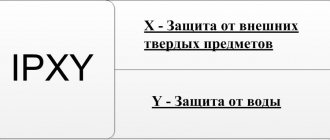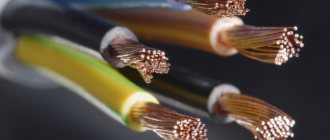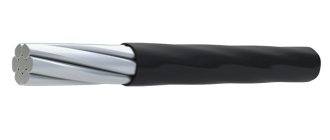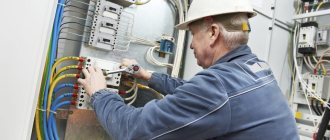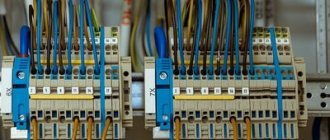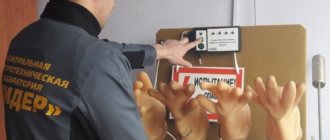State registration of the RosTestStandard certification system in the Federal Agency ROSSTANDART registration number ROSS RU.Z1527.04IZhRO
ROSTESTSTANDARD
Certification of products in the RosTestStandard center is carried out for compliance with technical regulations and established State safety and quality standards, we advise who issues, where and how to obtain, issue: a certificate of conformity, declarations of conformity, a certificate of state registration of products and a fire safety certificate. We determine exactly which of the above-mentioned permits is required to be issued according to the list of products subject to mandatory certification in the territory of the Customs Union (EAEU) or declaration of conformity.
STATE CERTIFICATION: 8 (800) 200-87-81 FREE CALL
| • Home | • Services | • Certificate of conformity | • Declaration of conformity | • To the manufacturer | • To the importer | • Technical regulations | • Commodity Nomenclature of Foreign Economic Activity of the EAEU | • Contacts |
Application area
This standard applies to the group of products covered by the International Electrotechnical Commission (information technology, electrical and instrument making products) with a voltage of not more than 72.5 kV (hereinafter referred to as electrical equipment (equipment)). The standard states:
- a) a classification of the degrees of protection provided by enclosures against the penetration of solid objects (including protection of people from access to hazardous parts of products and protection of electrical equipment inside the enclosure from foreign solid objects) and against the penetration of water (protection of electrical equipment inside the enclosure from harmful effects resulting from the penetration of water );
- b) designations of the specified degrees of protection;
- c) requirements for each designation;
- d) methods and modes of control and testing for checking electrical equipment enclosures for compliance with the established degree of protection.
This standard is applicable only to enclosures that, in all other respects, comply with all the requirements of the standards for specific types of electrical equipment, and in terms of materials and technology ensure that the specified degrees of protection remain unchanged under normal operating conditions.
This standard is also applicable to empty enclosures, provided that the general test requirements and selected degree of protection for equipment of this type are met.
Requirements regarding the resistance of enclosures and electrical equipment in general to other external influencing factors, except external solid objects and water, as well as protection from contact with dangerous moving parts located outside the enclosure (for example, fans), are established according to other relevant standards (for example, GOST 15150, GOST 15543.1, GOST 17516.1, GOST 24682). Accordingly, the auxiliary letter W is not used (4.1, 4.2, section 8).
Barriers external to and external to the enclosure, and barriers provided only for personnel safety, are not considered part of the enclosure and are not the subject of this standard.
Note. Electrical equipment technical committees may establish the limits and uses of the classification in their standards, and may define the concept of “enclosure” in relation to their equipment. However, it is recommended that for such a specific classification the tests do not differ from those specified in this standard. Additional requirements may be included in the standard for specific types of equipment, if necessary. The instructions that should be reflected in the standards for specific types of products are given in Appendix B. Technical committees may, by type of electrical equipment, standardize other requirements for specific types of equipment, provided that the degree of safety is not worse than that established in this standard.
NEMA Enclosure Type Compliance
A slightly different approach was used to create the NEMA standards, which are widely used to label equipment made in the USA. Having retained the list of basic negative factors, the developers paid additional attention to the following features:
- operation of products indoors and outdoors;
- resistance to the destructive effects of corrosive processes;
- maintaining the functional state during the icing process.
For example, the NEMA code “12K” indicates protection against water sprayed under low pressure, lubricants, and petrochemical products. Marking “11” confirms protection from condensate drops. In this design, parts can be immersed in oil for a long period of time.
The noted reasons explain the impossibility of perfect compliance with standards. The following list shows the approximate equality of control parameters for NEMA - IP by identification codes:
- 1 – 23;
- 2 – 30;
- 3 (3S) – 64;
- 3R – 32;
- 4 (4X) – 66;
- 6 – 67;
- 12 – 55 (65);
- 13 – 66.
Please remember that reverse matching is not valid. The IP standard involves the use of fewer control parameters compared to NEMA. In any case, with increased requirements for the accuracy of accounting for operating conditions, they turn to primary sources.
Definitions.
The following terms with corresponding definitions are used in this standard:
3.1. Shell - a part that provides protection of equipment from certain external influences and protection in all directions from direct contacts (International Electrotechnical Dictionary (VEI) 826-03-12)2).
Note. For the purposes of this standard, this definition, taken from the International Electrotechnical Dictionary, requires the following explanation:
- 1) Enclosures require protection of people and animals from access to dangerous parts;
- 2) Guards, the shape of openings or any other means (whether related to the enclosure or formed by equipment within the enclosure) designed to prevent or restrict access to special test fixtures are considered part of the enclosure unless they are removed without the aid of a key or other tool. .
- 2) IEC 50(826):1982 International Electrotechnical Vocabulary (VEI). Section 826. Electrical Installations of Buildings.
3.2. Direct contact - contact of people or animals with live parts (International Electrotechnical Vocabulary (VEI) 826-03-05).
Note. This definition from the International Electrotechnical Dictionary is provided for informational purposes only. In this standard, the term “direct contact” is replaced by “access to hazardous parts”.
3.3. Degree of protection - the method of protection provided by the enclosure against access to hazardous parts, ingress of external solid objects and (or) water and verified by standard test methods.
3.4. The IP Code is a codification system used to indicate the degrees of protection provided by an enclosure against access to hazardous parts, ingress of external solid objects, water, and to provide additional information associated with such protection.
3.5. A dangerous part is a piece of equipment that is dangerous to approach or touch, and has signs of a hazardous production factor.
- 3.5.1. Live hazardous part is a live part which, under certain conditions, may cause electric shock (see IEC 536)1)
- 3.5.2. A hazardous mechanical part is a moving part other than a smooth rotating shaft that is dangerous to touch.
- 3.5.3. A hazardous production factor is an production factor, the impact of which on a worker under certain conditions leads to injury or other sudden sharp deterioration in health (GOST 12.0.002).
- 1) IEC 536:1976 (currently document 64 (CB) 196) Classification of electrical and electronic equipment according to the level of protection against electric shock.
3.6. The protection provided by the enclosure against access to hazardous parts protects people from:
- — contact with live dangerous parts under low voltage;
- — contact with dangerous mechanical parts;
- — proximity to dangerous live parts under high voltage at a distance less than the sufficient air gap inside the enclosure.
Note. Such protection can be provided:
- — the shell itself;
- - using barriers that are part of the shell, or due to distances inside the shell.
3.7. Distance sufficient to protect against access to hazardous parts - a distance that prevents the accessibility probe from touching or approaching hazardous parts.
3.8. Accessibility probe - a test probe for checking the sufficiency of distance from dangerous parts of equipment, simulating in an appropriate way a part of the human body or tool, or equivalent, held by a person.
3.9. Object Probe - A test probe used to test the ability to penetrate an enclosure, simulating an external solid object.
3.10. Hole - A gap or hole in an enclosure that exists or can be created by applying a test probe with a specified force.
IP for electrical devices
The abbreviation IP, accepted throughout the world, has several possible decoding options: International Protection Marking/international security code, Internal Protection/internal protection, Ingress Protection Rating/degree of protection against interference.
The marking indicates the level of protection of a technical device from dust, solid objects, and water.
The data that characterizes the class of the device is determined experimentally using specially developed verification methods.
The protection class of any electrical device is marked as follows: a combination of the letters IP and two numbers
To determine the IP level, the international standard EC60529 is used, the analogue of which is GOST 14254-96, as well as the complicated German version DIN 40050-9.
On the territory of Russia, any equipment installed indoors must comply with PEU - rules for electrical installations, technical conditions - TU, GOST R51330.20-99.
According to the accepted Russian and international classification, the maximum level of protection is marked with the IP68 code.
This designation indicates that the device is completely dust-proof, which can also remain in water for a long time, experiencing significant pressure.
A convenient table summarizes the meanings of the two letters that are used to indicate the degree of IP protection with the decoding of all the given indicators (+)
The highest degree of protection provided by the DIN system is marked as IP69-K; Such marks are applied to products that can withstand high-pressure hot water washing.
You can find devices that have an undetermined degree of protection. In this case, the digital designation is replaced by the letter “X”, that is, the marking will look like “IPX0”. This designation may also be followed by one or two Latin letters.
Designations
The degree of protection provided by the enclosure is indicated by the IP code as follows:
4.1. IP code composition:
If there is no need to normalize the characteristic digit, it should be replaced with the letter X (or XX if two digits are omitted).
Additional and/or auxiliary letters are omitted without replacement.
When using more than one additional letter, alphabetical order is used.
If the enclosure provides different degrees of protection depending on the arrangement of equipment required by differences in installation, the corresponding degrees of protection shall be specified by the manufacturer in the instructions for each installation case.
The procedure for marking the shell is given in section 10.
4.2. IP code elements and their symbols
A brief description of the IP code elements is given in the diagram. A description of the degrees of protection is given in the sections indicated in the last column.
| Element | Numbers or letters | Implications for equipment protection | Implications for human protection |
| Code letters | IP | — | — |
| First characteristic digit | From penetration of external solid objects: | From access to dangerous parts: | |
| 0 | no protection | no protection | |
| 1 | diameter ≥ 50 mm | back of hand | |
| 2 | diameter ≥ 12.5 mm | finger | |
| 3 | diameter ≥ 2.5 mm | tool | |
| 4 | diameter ≥ 1.0 mm | wire | |
| 5 | dustproof | wire | |
| 6 | dustproof | wire | |
| Second characteristic digit | From harmful effects due to water penetration: | — | |
| 0 | no protection | ||
| 1 | vertical drop | ||
| 2 | drop (nominal angle 15°) | ||
| 3 | sprinkling | ||
| 4 | continuous spraying | ||
| 5 | jet action | ||
| 6 | strong jet action | ||
| 7 | temporary short dive | ||
| 8 | long dive | ||
| Additional letter (if necessary) | — | From access to dangerous parts: | |
| A | back of hand | ||
| B | finger | ||
| C | tool | ||
| D | wire | ||
| Auxiliary letter (if necessary) | Supporting information related to: | — | |
| H | high-voltage devices | ||
| M | driving condition during water protection tests | ||
| S | immobility during water protection tests | ||
| W1) |
- 1) See section “Introduction”, item a.
4.3. Examples of using letters in the IP code
The following examples explain the use and meaning of the IP code letters. Examples are discussed in more detail in Section 8.
- IPXX - no letters, no additions;
- IPX5 - the first characteristic digit is omitted;
- IPX2 - second characteristic digit omitted;
- IP20C - one additional letter used;
- IPXXC - both characteristic numbers are omitted, one additional letter is used;
- IPX1C - the first characteristic digit is omitted, one additional letter is used;
- IP3XD - the second characteristic digit is omitted, one additional letter is used;
- IP23S - one auxiliary letter is used;
- IP21CM - one additional and one auxiliary letter are used;
- IPX5/IPX7 - designation of two degrees of protection for one dual-use shell: protection against jets and protection against temporary (short-term) immersion.
System of codes and methods of their use
As follows from the dictionary definition, the word “code” here should be understood as a combination of signs or symbols, with the participation of which it is possible to compactly encrypt voluminous information. In the current article, a code system is used to make it easier to decipher. The code system helps to visually recognize characteristics and their corresponding definitions, as well as test results, thanks to comprehensive alphanumeric codes.
The purposes of use can be completely different:
- To determine the level of protection that is required both for instructions that are aimed at ensuring the protection of people when servicing devices, and for technical recommendations regarding installation taking into account the characteristics of the environment. In addition, code marking may be required if there are special customer requirements for the device.
- For the manufacturer, where the digital code describes the key properties of the design.
Accordingly, a number of standards for the manufacture and release of equipment establish a certain level of protection, which helps to navigate the choice of the right type of equipment. Regarding the degrees of protection of the shell for switching equipment, the codes “IP” and “IK” adopted by the international standardization system are used.
Degrees of protection against water penetration, indicated by the second characteristic numeral
The second characteristic numeral indicates the degree of protection provided by the enclosures against harmful effects on the equipment due to the penetration of water.
Tests for the second characteristic figure are carried out using fresh water. The actual degree of protection may not be satisfactory when high pressure and/or solvents are used for cleaning operations.
Table 3 provides a brief description and definition of protection for each degree represented by the second characteristic digit.
Those listed in Table 3 should be normalized using only the second characteristic digit and not using a short description or definition.
Tests are standardized in section 14.
It is assumed that designation by the second characteristic digit up to 6 inclusive means compliance with all the requirements for smaller digits simultaneously. However, it is not necessary to carry out tests to establish compliance with any of the lower degrees of protection if it is obvious that the results of such tests will be obviously satisfactory.
It is assumed that enclosures designated by only one characteristic numeral 7 or 8 are not suitable for withstanding the effects of jets of water (identified by a second characteristic numeral 5 or 6) and shall not satisfy the requirements of digits 5 and 6, except in cases of double coding as follows:
| The shell successfully withstands impact tests | Designation and marking | Degree of use | |
| jets of water, second characteristic figure | temporary (short) or long-term immersion in water, second characteristic figure | ||
| 5 | 7 | IPX5/IPX7 | Double |
| 6 | 7 | IPX6/IPX7 | Double |
| 5 | 8 | IPX5/IPX8 | Double |
| 6 | 8 | IPX6/IPX8 | Double |
| — | 7 | IPX7 | Limited |
| — | 8 | IPX8 | Limited |
“Dual-use” enclosures must meet the requirements for exposure to jets and temporary (short) or prolonged immersion in water.
"Restricted Use" enclosures are considered suitable for temporary (short) or long-term immersion and are not suitable for exposure to jets of water.
Table 3. Degrees of protection against water, indicated by the second characteristic digit
| Second characteristic digit | Degree of protection | Test conditions, item number | |
| Short description | Definition | ||
| 0 | No protection | — | — |
| 1 | Protected from vertically falling drops of water | Vertically falling drops of water should not have any harmful effects | 14.2.1 |
| 2 | Protected from vertically falling water drops when the shell is tilted up to 15° | Vertically falling drops of water shall have no harmful effect when the shell is tilted from the vertical in any direction by an angle of up to 15° inclusive | 14.2.2 |
| 3 | Protected from water falling as rain | Water falling as splashes in any direction making an angle up to and including 60° with the vertical shall have no harmful effect | 14.2.3 |
| 4 | Protected from continuous splashing | Water splashing onto the enclosure from any direction shall have no harmful effect | 14.2.4 |
| 5 | Protected from water jets | Water directed onto the enclosure in the form of jets from any direction shall not have any harmful effects | 14.2.5 |
| 6 | Protected from strong water jets | Water directed onto the enclosure in strong jets from any direction shall not have any harmful effects | 14.2.6 |
| 7 | Protected from exposure to temporary (short) immersion in water | The penetration of water into the enclosure in quantities causing harmful effects must be prevented when it is immersed for a short time under standardized conditions of pressure and duration. | 14.2.7 |
| 8 | Protected from exposure to prolonged immersion in water | The penetration of water into the enclosure in quantities causing harmful effects must be prevented when it is immersed in water for a long time under conditions agreed between the manufacturer and the user, but more stringent than the conditions for figure 7 | 14.2.8 |
Code IK – detailed description of values
For a number of countries, there is a pressing need to encode protection that protects the shell itself from mechanical damage. To successfully solve this problem, another characteristic digit was added to the IP code - the third (such countries include Portugal, France and others). Currently, when the IEC 529 standard is adopted as a European standard, no country is allowed to specify an IP code that differs even in a minimal way from the standardized version.
Due to the fact that the IEC abandoned the use of the third digit and did not include it in the standards, the only way to use it together with the IP code was to develop another encoding, which is what the developers of the euro standard EN 50102 did: IK code.
The meaning of the third digit could vary depending on the country, which was a contradiction in relation to the requirements imposed by the commissions, which are directly related to equipment manufacturers. They spoke out for a unified classification of codes, as a result of which the degrees of the IK code were assigned values that differ in format from the previous third digit of the IP code.
Correspondence table between the old third digits of the French IP code and the IK code:
| Former third digits of the NF C 20-010 (1986) IP code | IP XX1 | IP XX3 | IP XX5 | IP XX7 | IP XX9 |
| IK code | IK 02 | IK 04 | IK 07 | IK 08 | IK 10 |
For maximum transparency and to eliminate the confusion that accompanies the coding, each of the IK degrees was designated as a two-digit number.
Degrees of protection against access to hazardous parts, indicated by an additional letter
The additional letter indicates the degree of protection of people from access to hazardous parts.
Additional letters should only be used:
- - if the actual protection against access to hazardous parts is higher than the protection indicated by the first characteristic digit;
- - or if only protection against access to hazardous parts is indicated, and the first characteristic digit is replaced by the symbol X.
For example, only a higher degree of protection can be provided by installing barriers, specially shaped openings or due to distances inside the shell.
Table 4 shows accessibility probes that conditionally reproduce individual parts of the human body or objects that are in a person’s possession. In addition, it defines the degrees of protection against access to hazardous parts, indicated by additional letters.
The degree of protection of an enclosure can be designated by an additional letter only if it satisfies all lower levels of protection. However, it is not necessary to carry out tests to establish compliance with any of the lower degrees of protection if it is obvious that the results of such tests will be obviously satisfactory.
Tests are standardized in section 15.
Examples of IP coding are given in Appendix A.
Table 4. Degrees of protection against access to hazardous parts, indicated by an additional letter
| Additional letter | Degree of protection | Test conditions, item number | |
| Short description | Definition | ||
| A | Protected from back of hand access | The accessibility probe - a sphere with a diameter of 50 mm - must remain at a sufficient distance from dangerous parts | 15.2 |
| B | Protected from finger access | A hinged test pin with a diameter of 12 mm and a length of 80 mm must remain at a sufficient distance from dangerous parts | 15.2 |
| C | Tool protected | The accessibility probe with a diameter of 2.5 mm and a length of 100 mm must be kept at a sufficient distance from dangerous parts | 15.2 |
| D | Protected from access by wire | The accessibility probe with a diameter of 1.0 mm and a length of 100 mm must be kept at a sufficient distance from dangerous parts | 15.2 |
Electrical safety in the bathroom: IP class
A high degree of security is especially important for devices that have to operate in difficult conditions.
Such rooms in the house include the bathroom, the air of which contains a high percentage of water vapor.
The high humidity inherent in bathrooms requires particularly careful selection of electrical appliances. In such conditions, it is necessary to use devices with a high degree of moisture protection (+)
Before equipping this room, a plan for the placement of electrical appliances should be developed in advance, taking into account their distance from sources of moisture.
The highest, almost 100 percent, degree of humidity is observed directly next to the shower or bath. In this area, it is required to use low-voltage luminaires with the highest protection levels IP67 or IP68.
The area above the font or shower stall is also considered quite dangerous: splashes and steam enter here in large quantities. Devices marked IP45 are suitable for installation.
If the lamp is planned to be mounted in the center of the room at some distance from sources of moisture, it is enough to choose an option with class IP24 or higher.
For the driest part of the bathroom, a product marked IP22 is recommended. Some degree of protection must be provided due to the background moisture content of the room and the possibility of steam release.
Combinations of letters and numbers indicating the protection class are applied to all types of electrical appliances. As a rule, it can be found on the body
When selecting a waterproof outlet, it is better to give preference to one with a moisture protection class in the range of 4-6. If it is intended to be placed away from the shower or font, marking 4 is sufficient.
At a closer location with possible splashes, the level of protection should be higher - 5 or 6.
To equip a bathhouse or sauna with lamps and/or other electrical appliances, you need to choose electrical accessories of class IP54 and higher.
Additional information on arranging a bathroom is presented in the articles:
- How to choose bathroom fixtures: which one is better and why? Comparative review
- Installing sockets in the bathroom: safety standards + installation instructions
Auxiliary letters
In the standard for specific types of products, additional information can be established using an auxiliary letter placed after the second characteristic digit or after an additional letter.
These exceptional cases must comply with the safety requirements of this standard, and the product specific standard must clearly set out additional procedures to be followed when testing to determine compliance with such classification.
The letters listed below have previously been used and have the following meanings:
| Letter | Meaning |
| H | High voltage devices |
| M | Tested for compliance with the degree of protection against harmful effects due to water penetration: equipment with moving parts (for example, the rotor of a rotating machine) in a state of motion |
| S | Tested for compliance with the degree of protection against harmful effects associated with the penetration of water: equipment with moving parts (for example, the rotor of a rotating machine) that are stationary |
| W | The letter is not used, see section “Introduction”, listing a |
Other letters may be used in product standards1).
The absence of the letters S and M means that the degree of protection does not depend on whether parts of the equipment are in motion or not. This, however, may necessitate testing under both conditions. However, one test under one of the specified conditions is sufficient if the feasibility of the protection requirements under other conditions is clear.
- 1) Before introducing a new letter, TC 341 should be consulted to avoid double use of additional letters.
Extended German standard
There is also the DIN 40050-9 standard adopted in Germany, which provides an increased level of protection IP69K, which indicates the possibility of high-temperature washing.
Appliances marked with this marking are not only completely dustproof, but also withstand extreme combinations of hot water and high pressure.
To protect devices with a zero protection class from water vapor, special boxes are used, the design of which prevents the ingress of moisture
Initially, this level of protection was used to mark special vehicles - concrete mixers, trucks, sprinklers, which require regular intensive washing.
Later, the updated format found application at enterprises in the food and chemical industries, as well as in other areas of the national economy.
Examples of designation using IP code
9.1. IP code without additional letters:
Shell with the specified designation (IP code):
- (3) - protects people holding tools with a diameter equal to or greater than 2.5 mm from access to dangerous parts;
- — protects the equipment inside the enclosure from penetration of external solid objects with a diameter equal to or greater than 2.5 mm;
- (4) - protects the equipment inside the enclosure from harmful effects due to splashing of the enclosure with water from all sides.
9.2. IP code using additional letters:
Shell with the specified designation (IP code):
- (2) - protects people from accessing dangerous parts with their fingers;
- — protects the equipment inside the enclosure from the ingress of external solid objects with a diameter equal to or greater than 12.5 mm;
- (3) - protects the equipment inside the enclosure from the harmful effects of water in the form of rain;
- (C) - protects people from accessing dangerous parts if they are holding a tool with a diameter equal to or greater than 2.5 mm and a length not exceeding 100 mm (the tool can penetrate the entire length of the enclosure);
- (S) - Tested to provide protection against harmful effects due to ingress of water when all parts of the equipment are stationary.
Conclusions and useful video on the topic
The video will help you understand the degree of IP protection, which is discussed using the example of various electrical appliances:
Using a device with an inadequate level of protection can lead to serious consequences: failure of the device, short circuit of the electrical wiring, and even electric shock.
To avoid such troubles, when selecting one, one must certainly take into account the conditions in which he will have to work. Before purchasing, you need to check the labeling, which must fully comply with the requirements.
Do you have anything to add, or do you have questions about marking and deciphering the degree of IP protection? You can leave comments on the publication, participate in discussions and share your own experience in choosing electrical appliances. The contact form is located in the lower block.
Application of electrical equipment in design
In the design of equipment, the protective degree plays an important role, since this degree must be assessed both for the outer shell and for the component parts inside the structure (curtains, partitions, etc.). The assessment here is of key importance, since during operation or during maintenance, personnel may come into direct contact with individual parts inside the device (for example, when rolling out a circuit breaker).
Even in the case where the shell creates a full degree of protection, it is important to monitor the condition of the internal partitions, which should not be removed, either completely or partially. This rule does not apply to equipment such as electric motors or transformers, but this point is important to consider in relation to cabinets - they must be accessible to personnel servicing this equipment.
In the situation described, two types of compartments are implied:
- Those that are practically never open (compartments for tires, etc.), and to close them they use a bolted connection. If you don’t have a special tool at hand, you won’t be able to open such a compartment. It is understood that precautions will be taken for safety reasons.
- Those that are open during normal operating conditions of the equipment. Basically, they are closed with doors equipped with an additional control system with the ability to lock them if necessary. This is an additional security setting that shell protection provides.
Regardless of the location and position of the equipment during its maintenance or operation, it is important that the electrical circuit of the enclosure is not interrupted.
